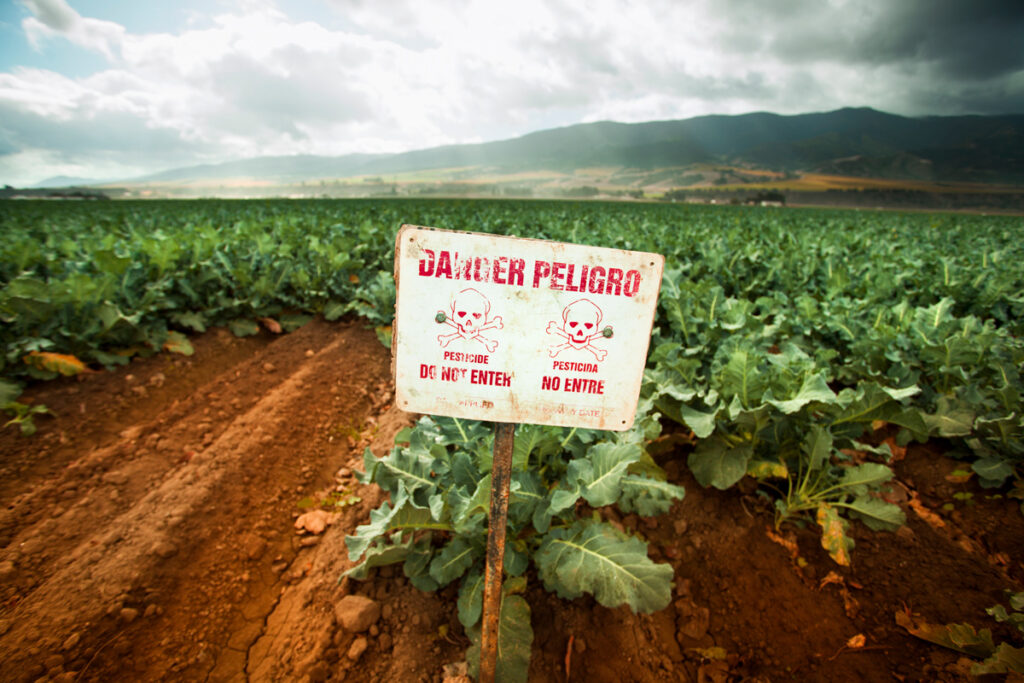
USING AND storing pesticides in an agricultural environment requires particular care and adherence to safety regulations and laws, as many of them can be hazardous to workers if they are exposed to them.
Failure to follow regulations can result in sickened workers and heavy OSHA fines.
Training your employees is key, as is having processes in place to ensure their safety and that of nearby communities.
Pesticides are dangerous chemicals and there are certain storage and use procedures that are unique to different types. Here’s how to ensure safety on your farm:
Certification and training – Ensure that you have the appropriate permits and that the workers who will be handling them receive the proper certificates and training so they know how to use pesticides safely, correctly and according to the requirements of the law and workplace safety regulations.
Following instructions – Workers must read and follow the instructions on the pesticide product label or packaging.
These provide directions for proper mixing, application, storage and disposal of the material and its containers.
Engineering controls – Engineering controls listed on pesticide labels or packaging may require closed application and mixing systems that reduce the chances of workers being exposed during use.
If you are using such a system, ensure that your employees are trained in how to operate it and that it’s maintained per manufacturer instructions and inspected before each use.
Personal protective equipment – Your employees must use all of the PPE required on the pesticide packaging every time it’s being applied. PPE may include:
- Coveralls
- Eye protection.
- Protective gloves and footwear
- Chemical-resistant aprons and hoods
- Respiratory protection
Take care when mixing pesticides
- Mix or pour concentrated pesticides below waist level, to minimize any splash or fumes near the face.
- Stand upwind so that fumes or dust are blown away from the body.
- Mix or pour in a well-ventilated area.
- Prepare only the amount needed for application.
- Clean up spills or leaks immediately.
- Securely close containers immediately after use
Provide decontamination facilities – After applying pesticides, workers need to decontaminate in these facilities, which must be stocked with ample supplies of soap, water and towels.
Also, you should have on-site emergency eyewash stations, particularly near where the pesticide is being applied.
Train your workers to wash their hands and face and change their clothes before leaving the worksite if they’ve been around or been handling pesticides. All clothes and PPE should be washed after every use.
Post warnings – Before you start applying pesticide to a field, you must post warnings to your employees, so they can vacate that part of the operation during application.
Monitor weather – Before and during application, monitor weather and other factors that may affect the application process and pose a danger. .
Keep records – Records of pesticide use should be maintained.
Proper storage
Keep pesticides and related materials in a locked cabinet, isolated room or separate building.
- Control access to the storage area and post “Pesticide Storage” signs.
- Never store pesticides near food, seed, feed and fertilizers.
- Store pesticides in the original container with an attached label.
- If storing pesticides on shelves, store liquids below dry powders or granules.
- Check containers periodically for leaks, breaks or corrosion.
In case of exposure
Despite your best efforts and training, sometimes accidents happen. Make sure to follow first aid procedures on the label if an exposure occurs.
Have in place emergency procedures in case of severe exposure and sickness.
